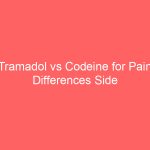
Contents
What Is the Number 1 Neurological Disease?
Neurological diseases affect the brain, spinal cord, and nerves throughout the body. There are nearly 600 neurological disorders.
The most common neurological disorders are:
What are the top 5 neurological disorders?
1. Headache
Headaches are classified into four types:
Vascular headache: Includes cluster headaches, high blood pressure headaches, and toxic headaches caused by fever from acute illness.
- Muscular contraction (tension) headache: Includes headaches caused by muscle tightening or tension in the face and neck.
- Traction headache: Also known as persistent progressive headache, worsens over time and may indicate an issue that distorts pain-sensitive structures within the cranium.
- Inflammatory headache: Caused by meningitis (mild inflammation of the meninges, or membranes that protect the brain and spinal cord).
- Sudden, severe headaches
- Headaches associated with:
- Stiff neck
- Fever
- Convulsions
- Confusion
- Loss of consciousness
- Eye pain
- Ear pain
- Headaches that occur after a blow to the head
- Persistent headache in a person who was previously headache-free
- Recurring headaches in children
Treatment for headaches
Treatment is recommended when headaches occur 3 or more times per month. Techniques for preventing and treating migraines and other vascular headaches include:
- Medications
- Biofeedback training
- Stress reduction
- Dietary changes
- Regular physical activity, such as swimming or walking
2. Stroke
A stroke occurs when blood supply to a section of the brain is cut off or when a blood vessel in the brain bursts, causing blood to leak in and around the brain tissue. Brain cells die as they do not receive oxygen and nutrients.
Stroke is classified into two types:
- Ischemic (blockage of an artery feeding the brain)
- Hemorrhagic (bleeding into the brain)
Symptoms of stroke include:
- Sudden, severe headache
- Numbness or weakness, particularly on one side of the body
- Confusion or speech difficulties
- Difficulty seeing in one or both eyes
- Difficulty walking
- Dizziness or loss of balance or coordination
Treatment for stroke
The most common treatment for stroke is medication or pharmacological therapy. Antithrombotics and thrombolytics are frequently used to prevent or treat stroke.
Treatment for stroke is usually done in three stages:
- Prevention: Treat underlying risk factors for stroke, such as hypertension, atrial fibrillation, and diabetes.
- Immediate treatment following a stroke: Halt a stroke by rapidly dissolving blood clots or preventing bleeding.
- Post-stroke rehabilitation: Helps people overcome difficulties caused by a stroke, such as speech issues or weakness.
3. Alzheimer’s disease (AD)
Alzheimer’s disease is a progressive neurological disorder that develops over time. Symptoms include memory loss, confusion, changes in behavior and personality, and loss of mental function. AD is the leading cause of dementia in adults aged 65 and older.
Treatment for Alzheimer’s disease
There are medications that can help with symptoms but there is currently no cure for Alzheimer’s disease.
4. Amyotrophic lateral sclerosis (ALS)
ALS, also known as Lou Gehrig’s disease, is a progressive neurological disease that destroys nerve cells responsible for regulating voluntary muscles.
In ALS, both upper and lower motor neurons deteriorate or die, resulting in the inability to send signals to muscles. Muscles eventually weaken and waste away. ALS does not affect a person’s intellect or personality but may cause cognitive impairments in some cases.
Treatment for ALS
There is no cure for ALS, but treatment can help slow disease progression and manage symptoms.
5. Epilepsy
Epilepsy is a group of brain disorders in which abnormal brain activity causes seizures or periods of unusual behavior, sensations, and emotions.
Treatment for epilepsy can include medications and surgical methods. It is important to begin therapy as soon as epilepsy is detected.


